The Art of Upselling in SaaS Sales: How to Increase Customer Value
Published on Sep 28, 2023

We all know that retaining existing customers is more cost-effective than acquiring new ones. But one of the best ways to really boost profitability without a lot of extra effort is using upselling in SaaS sales.
To quantify, research has found that “upselling increases revenue by 10-30% on average,” and “the probability of selling to an existing customer, with whom you have established a relationship, is 60-70%.” Those are some impressive numbers and show firsthand how big of an impact upselling in SaaS sales can have.
For this post, I’ll share with you some practical strategies, along with examples so you’ll know how to implement upselling in your SaaS sales properly.
Identify High-Probability Upsell Opportunities
Just like not all leads are created equal, neither are existing customers from an upsell perspective. By this, I mean that certain segments will have a high likelihood of converting to a more expensive product version while others will only have a low likelihood. So the first step to having success is knowing how to identify high-probability upsell opportunities.
There are a few ways to do that, but here’s what I feel are two of the best.
One is to use analytics to monitor SaaS product usage, behavior, and engagement and then target the segment of customers that rank highly in these areas. If, for example, one customer used your SaaS product daily and took advantage of most of the features, they would be a much better upsell candidate than someone who only logged into your SaaS product weekly and only used a feature or two.
After narrowing down your high-priority list, you could then have your SaaS sales team initiate outreach through each customer’s preferred channel (email, phone, text, etc.). This brings me to my next point.
Personalize Your Outreach
Once you know which customers to reach out to, you’ll need to tailor your outreach to ensure your offerings address each customer’s unique needs. Let’s look at Slack’s pricing options as an example.
Say one of their customers was using the free version. They used Slack consistently but were only running a small team where they could likely gain value from some additional features but didn’t need all the bells and whistles. When performing outreach, a sales rep would likely want to suggest the Pro or Business+ version of Slack, as it offers plenty of great benefits for small businesses.
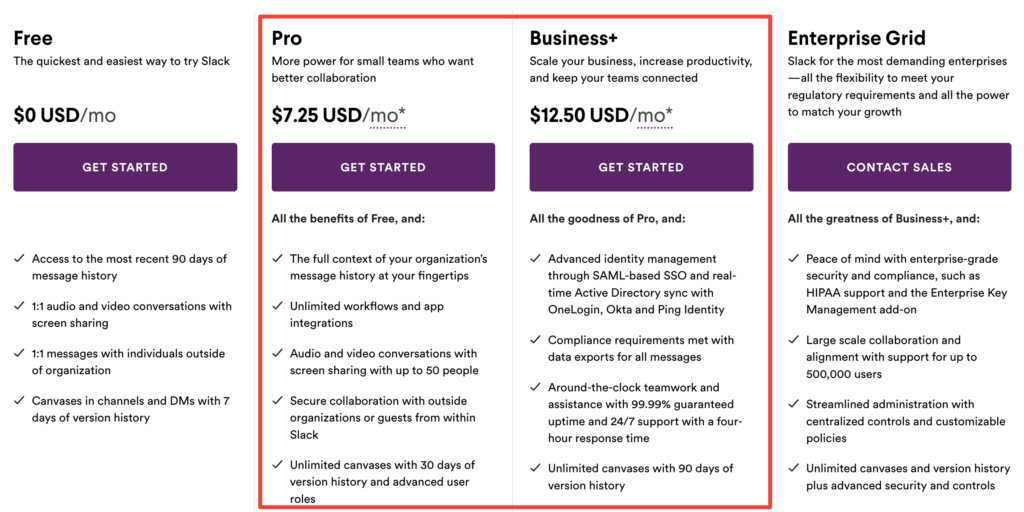
However, they probably wouldn’t want to suggest Enterprise Grid because this is aimed at much larger companies with extensive needs.
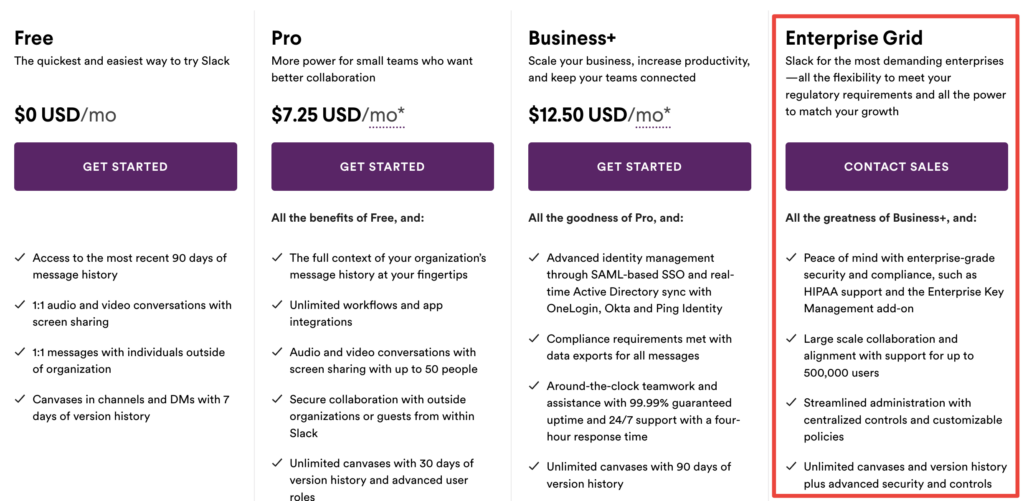
This is a hyper-simple example, but I think you get the idea. The point here is that you should always make personalized upsell offers, as that’s going to A) increase your chances of converting and B) ensure your customers get the maximum value.
Automate Upselling with Triggers
Up until this point, the SaaS upselling outreach methods I’ve discussed have required a manual approach. But for this point, let me talk about automating your upselling.
One of the best ways to do this is by using upselling triggers that let high-potential customers know about relevant offers based on their behaviors. There are two main ways to go about this.
First, you can use native, in-app messaging to encourage customers to upgrade their plan by showing them the benefits they’ll get at the opportune time. This is something Slack does expertly by letting users know when they’re approaching the maximum amount of searchable messages.
While their policy has since changed, it used to be that free users were limited to 10,000 searchable messages. Once they exceeded that limit, some of a user’s older messages were no longer shown.
When a free user approached 10,000 messages, it would trigger Slack to automatically display this upsell that showed the limitations of their free plan.
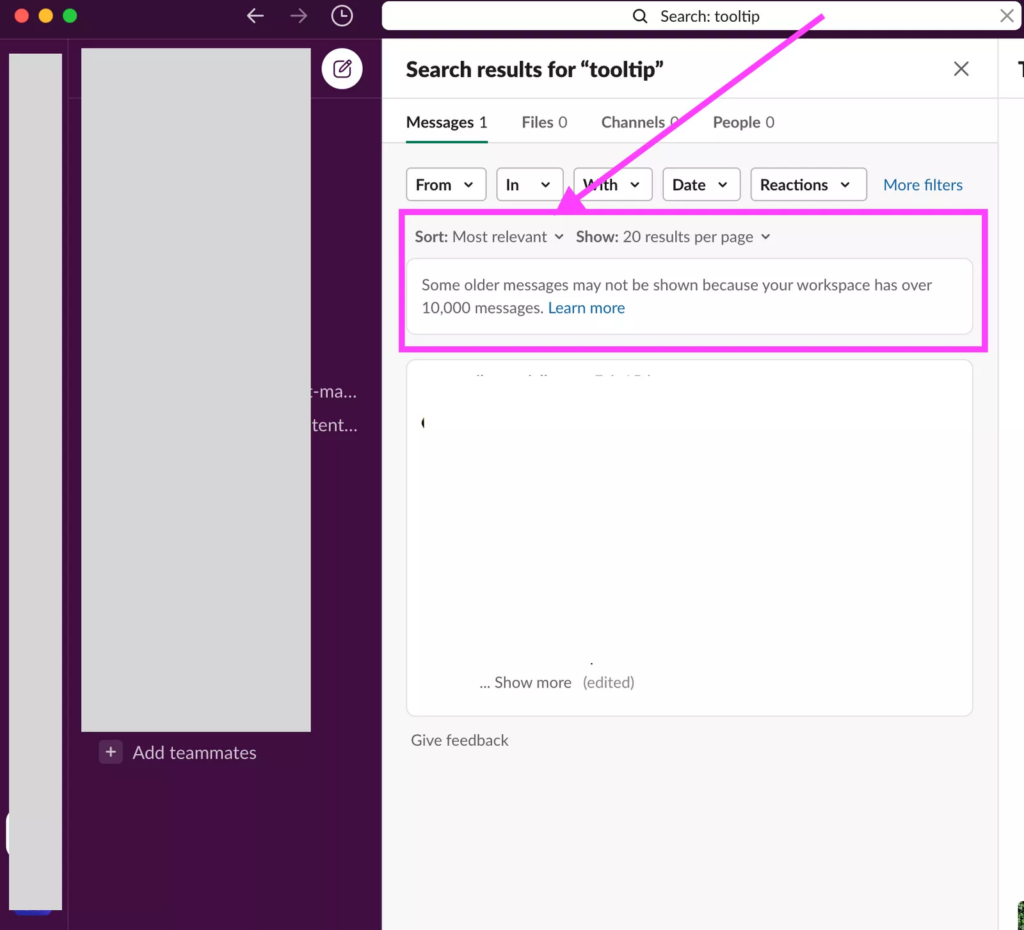
Users who were interested could simply click “Learn more” and get the full rundown and upgrade.
Convey Value
Once an existing customer has been propositioned for an upsell, they need to understand at a glance the exact value they’ll get from it. The more concise you are about conveying value, the stronger your chances are of converting.
Most SaaS companies that succeed at upselling simply provide a side-by-side comparison so customers can see how one plan differs from the next. AI image generation platform Leonardo, for example, offers a succinct breakdown of different plan benefits.
So if a customer wanted to generate more images per month (which is done with tokens), they may be interested in making the jump from the Apprentice plan, which only offers 8,500 tokens per month to the Artisan plan, which offers 25,000 tokens.
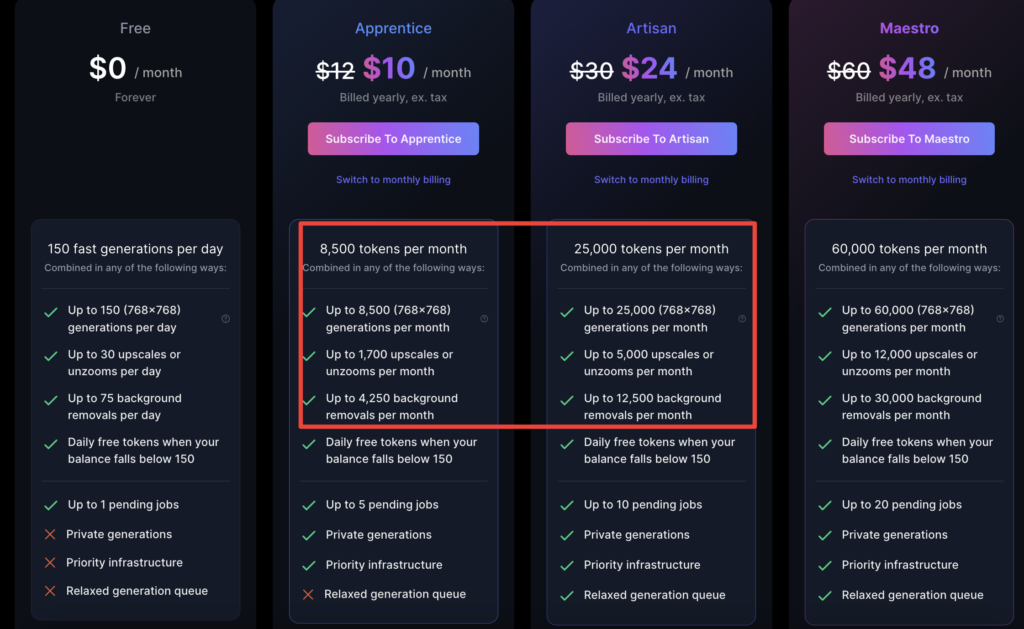
And for customers who are on the fence about an upsell, you can always leverage testimonials or case studies that show how other real-life customers have benefited by making the switch.
Incentivize Upselling Offers
Finally, you can often increase your conversion rate even more by offering targeted incentives, with two of the most popular being a free trial or discount. This is a technique that Leonardo currently uses where they’re giving customers a percentage off when they upgrade product versions.
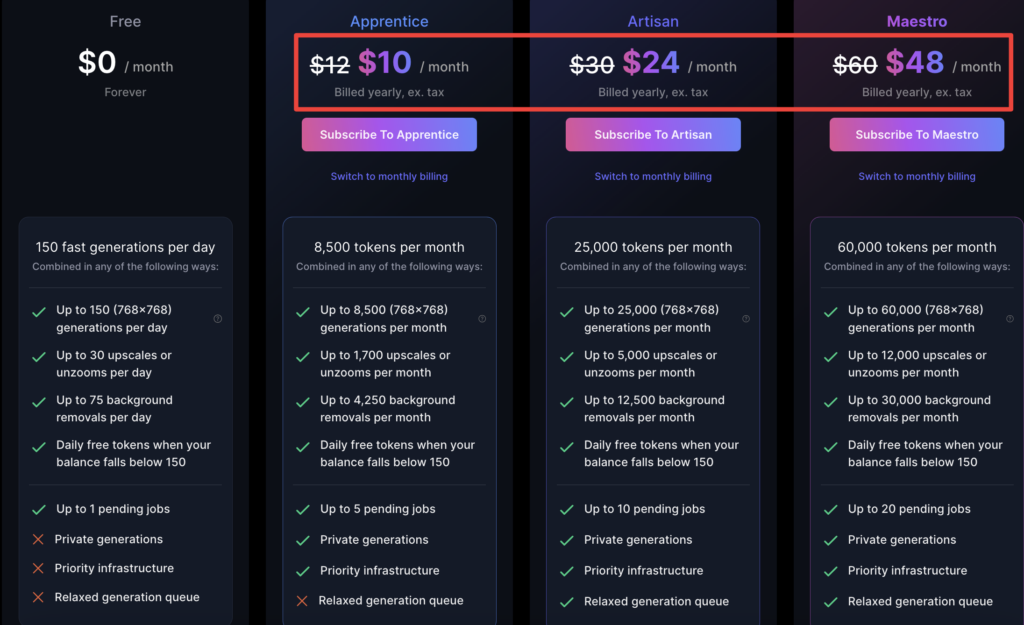
And to encourage customers to take action right away, you may only want to make your incentives available for a limited time to create a sense of urgency.
Succeeding with Upselling in SaaS Sales
With companies routinely increasing revenue by as much as 30% through upselling in SaaS sales, it’s hard to argue with the impact this technique can have. As long as your customers are genuinely getting more value, it’s the ultimate win-win. It’s just a matter of fleshing out your upselling strategy and taking the right steps to maximize your conversion rate.
Want to find elite SaaS sales reps that can help you close more deals? See how the Original Sales Assessment can help you find the best of the best.